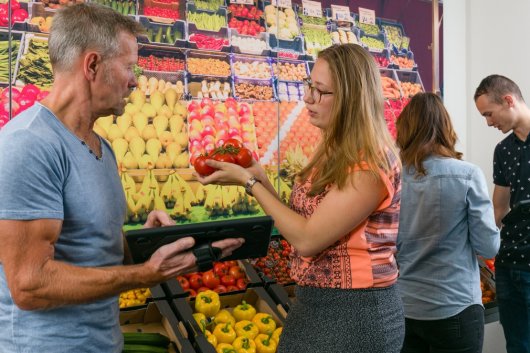Consumers expect that the vine tomatoes they buy in the store are fresh. But how do you see or feel whether a tomato is fresh? And can that freshness be measured quickly and reliably? The Greenhouse Horticulture and Flower Bulbs Business Unit of Wageningen University & Research wants to develop a method in which sensors and image analysis give an indication of the freshness and shelf life of a vine tomato.
Shelf life does not only depend on the harvest date. Older tomatoes can be experienced as fresh for longer period than tomatoes that were harvested more recently (because they are a different variety or due to growing conditions, for example). Determining the shelf life of batches of vegetables is still human work, but that is relatively expensive, subjective and not flexible.
Technological solution
WUR wants to develop a solution for this - together with several breeding companies, an inspection body and companies in sensor technology. This solution consists of a combination of techniques. For example, spectral sensors can be used to investigate the texture of the vine tomato, without having to touch the fruit. And with image analysis, the color values and the degree of gloss of the fruits, as well as the size and shape of the green parts, can be mapped out.

Formula for freshness
To determine the correct method, the members of the WUR consumer panel give their opinion on a large number of vine tomatoes: how fresh do you think the tomato looks, and should you buy the vine tomato? Experts are also asked about their observations. This input is then linked to the measurements of the sensors and image analysis, among other things. This creates a 'formula' for perceived freshness, which can then be used to predict shelf life.
Combat food waste
The new method provides objective measurements. This makes it easier to compare the shelf life of different batches of vine tomatoes in the chain. The method thus can also help combat food waste. Moreover, the methodology can also be used for other crops in the future.
The research is expected to start in early 2021 and is an initiative of a consortium consisting of a number of companies and WUR. The project is part of the submitted PPP 'Future Sensors and Digital Twins'. Companies wishing to participate can contact Caroline Labrie.






